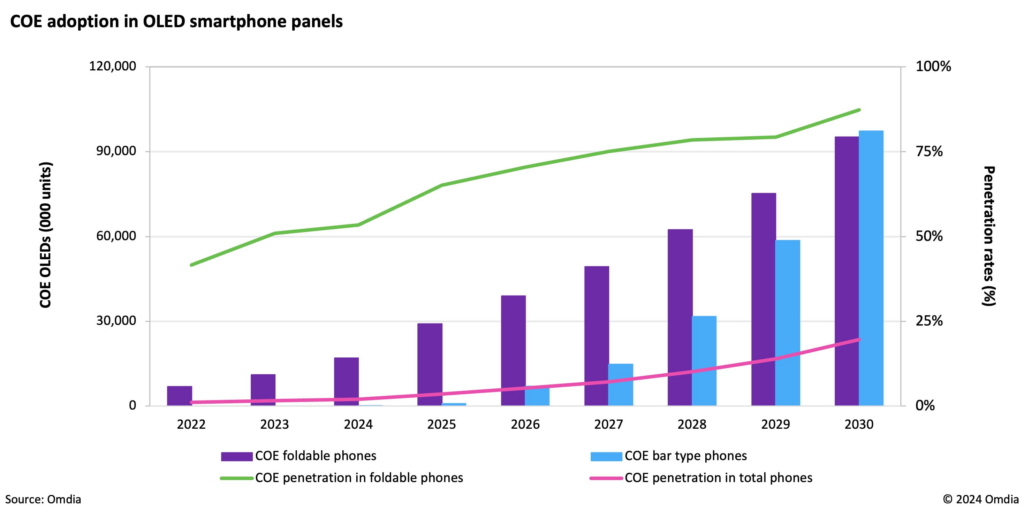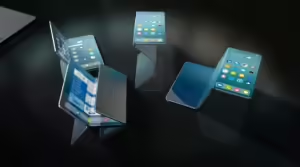The growing demand for foldable OLED smartphones has led to a significant forecasted increase in the adoption of Color Filter on Encapsulation (COE) technology, which is expected to achieve a compound annual growth rate of 33% between 2024 and 2030. According to research from Omdia, COE is poised to replace circular polarizers as the dominant method for reducing ambient light reflection and glare in OLED smartphones, with projections indicating that by 2030, COE will be used in nearly 90% of foldable displays and almost 20% of the broader OLED smartphone market, which is expected to reach nearly one billion units.

COE technology, despite its higher reflectivity compared to circular polarizers, offers several advantages, including increased panel brightness, reduced power consumption, extended panel lifetime, and an expanded color gamut. These benefits contribute to enhanced readability, particularly in foldable displays. COE also has a thinner profile and causes less film stress, making it highly suitable for foldable devices.
The trade-offs between circular polarizers and COE are becoming less pronounced due to advancements in black pixel definition layer (PDL) materials and optimization of pixel, PDL, color filter, and electrode designs. These developments are positioning COE as the preferred choice for foldable OLED displays.
While COE implementation requires significant initial capital investments for equipment and facility preparation, Omdia’s cost analysis indicates that the mature manufacturing costs of COE-equipped OLED panels are comparable to those using liquid crystal (LC) type circular polarizers. High-end smartphones often use LC circular polarizers for their superior performance, but with minimal cost differences, the broader adoption of COE in conventional OLED smartphones will likely hinge on consumer perceptions of its image quality relative to circular polarizers, according to Omdia.

